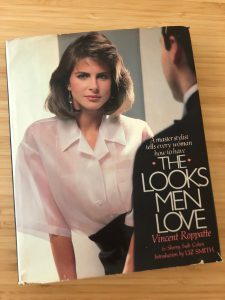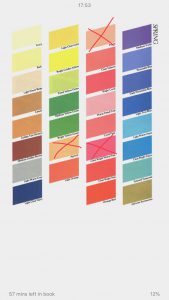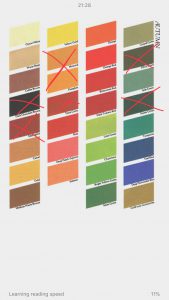This post uses affiliate links.
In my last post, I introduced the latest entrant in my Historical series: The Looks Men Love by Vincent Roppatte. While the system is contemporaneous to Kibbe, it has a perspective that is outmoded in 2018, and there are things in it that I can’t really get behind. But it is a fun book with some new (to us) ideas that I think will prove useful to many. So first I am going to introduce the way Roppatte says to use his work, and then I will go into how I see it fitting in with the various other systems we all already use.
He suggests using the following three-step method:
1. Choose yourself.
Read through the descriptions of all the types (apart from the Fantasy Woman), their likes and dislikes, etc., and choose the one that sounds like you. You need to be careful of three things:
- The current look you may be wearing may not be best for your body type or the best expression of your personality.
- You may be more than one. You just can’t be two things at the same time. He gives the examples of Take Charge during the day and Cool Sophisticate at night, or someone who was a Gamine when young but grew into a Romantic (in this system, Gamine is reserved for the young, which definitely isn’t my favorite approach). I have noticed that whenever there is a possibility of mixing, people get very, very excited and tend to want to be a combo of many different things and few seem to want to stick to just one, so I would suggest seriously taking into consideration looking at this system with truly finding one type in mind. Roppatte thinks that a lot of Judy Garland’s internal turmoil came from trying to be Cool Sophisticate AND Gamine and Girl Next Door at the same time, so, keep that in mind.
- You need to be realistic. He says that someone “fifty-five, heavy, and intellectual” can’t possibly be a Gamine, and as I said, I don’t like defining these categories by weight or age, but I would think more about who you authentically are: I couldn’t realistically pull off Cool Sophisticate or Sensualist. I’m just not that kind of woman, and that’s okay.
2. Recognize your male counterpart.
“Read the profiles of the men who are attracted to each of the basic looks. You will probably recognize one of these men. He’s the guy you married, the guy with whom you’re having an affair, or the guy you’d really like to know.” (As you might be able to tell from this sentence, while this book is outdated, it’s not conservative and would not be a good book for people who subscribe to a conservative viewpoint and would like to see a return to traditional gender roles, etc.) If there i a mismatch between the men you’re attracted to and the men who are/who you would like to be attracted to you, go back to point one: there is a strong possibility you’ve mistyped yourself. And then of course, not all of my readers are cis and heterosexual, so again, that is why this book is historical. It mentions gay men in passing, but not the possibility that someone who identifies as a woman may not want to attract men at all. Roppatte’s major point here is don’t bother with thinking about opposites attract: it says that men “look for a female expression of their own needs–and tend to first identify her by her look.” So the men in the profiles aren’t looking for their opposite or someone like them, but someone who complements them, and I think if you seriously want to use the book this way and you’re interested in men, you can do the same thing.
3. Fulfill your promise.
Read the chapter pertaining to you and understand how to achieve your look. He again emphasizes how you can’t be more than two things at the same time: Shirley MacLaine is Take-Charge Chic, but can pull off Gamine (rare at 50, he notes!), but she doesn’t do both at the same time. Princess Grace of Monaco had an image and lifestyle to project, with no messiness or the “romantic hair of her youth,” so he came up with her sleek, pulled-back hairstyle. Liza Minnelli apparently once tired of being a Gamine and decided to get a body wave, “but her public was not at all happy.” If it works for you, keep it! Consistency is key, even if you, like Shirley, can flirt with something else at times.
Now, onto how I suggest using this information. You can use it exactly as he lays it out, if that fits your desires for your life. You can apply it as an addition to something like your Kibbe Image ID, since while there are some hard and fast rules (some types are taller or shorter, some types are restricted by weight and/or age, etc.), in terms of shape, there is actually a lot of leeway. You can use everything except for the men-centered part. Or you can just read it as a historical artifact. It’s up to you. I’m not going to editorialize the content, but present it as is, even when it comes off a little strangely to us in 2018.


